Circulatory System
1/60
There's no tags or description
Looks like no tags are added yet.
Name | Mastery | Learn | Test | Matching | Spaced |
|---|
No study sessions yet.
61 Terms
2 main components of the circulatory system
cardiovascular and lymphatic
2 parts of cardiovascular system
1. cardio: circulation within the heart
2. vascular: blood vessels
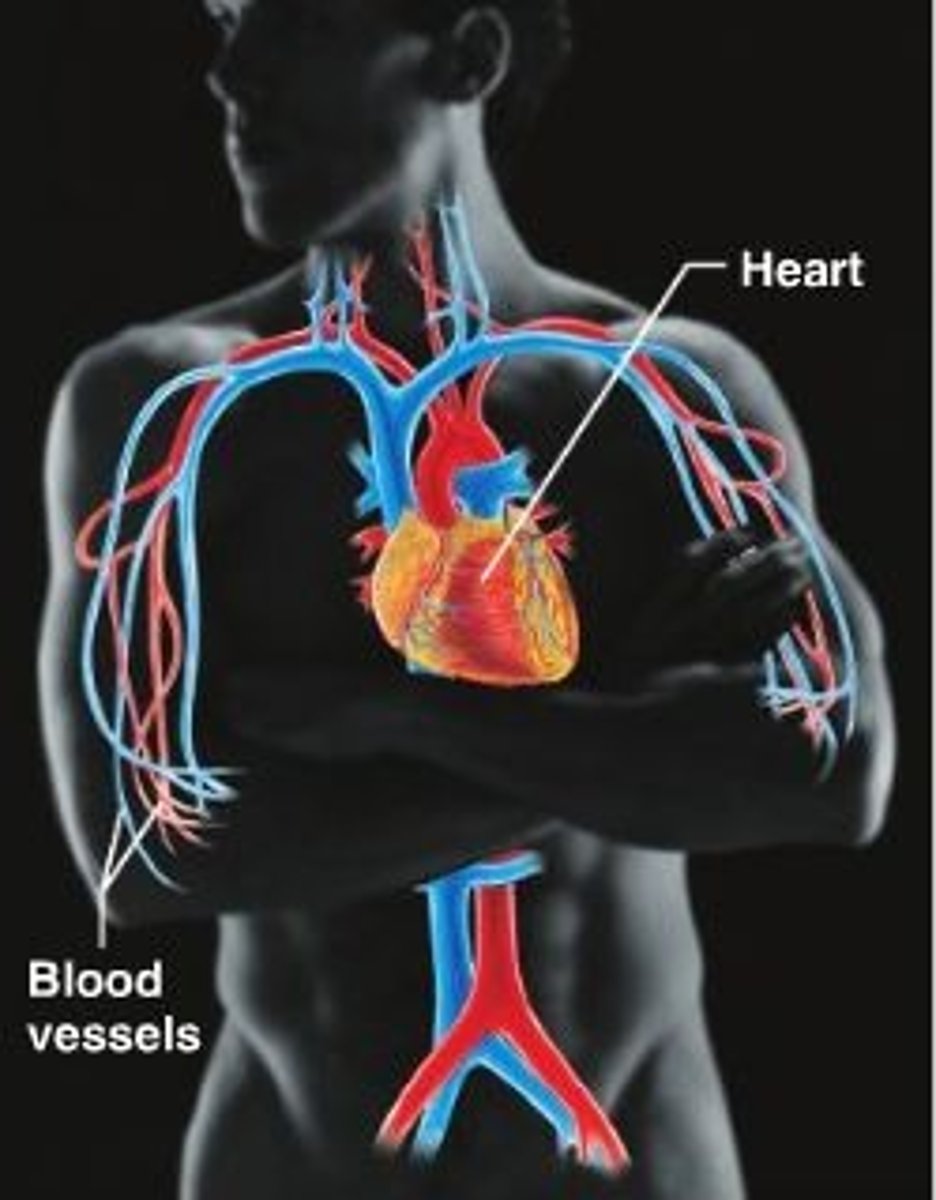
3 functions of the cardiovascular system
1. transportation of things for normal body activity
2. removal of waste products through kidneys and lungs
3. maintenance of body temp, water, and electrolyte balance
What are red blood cells (erythrocytes)?
produced in the red bone marrow; blood cells that carry oxygen by the protein hemoglobin to body tissues
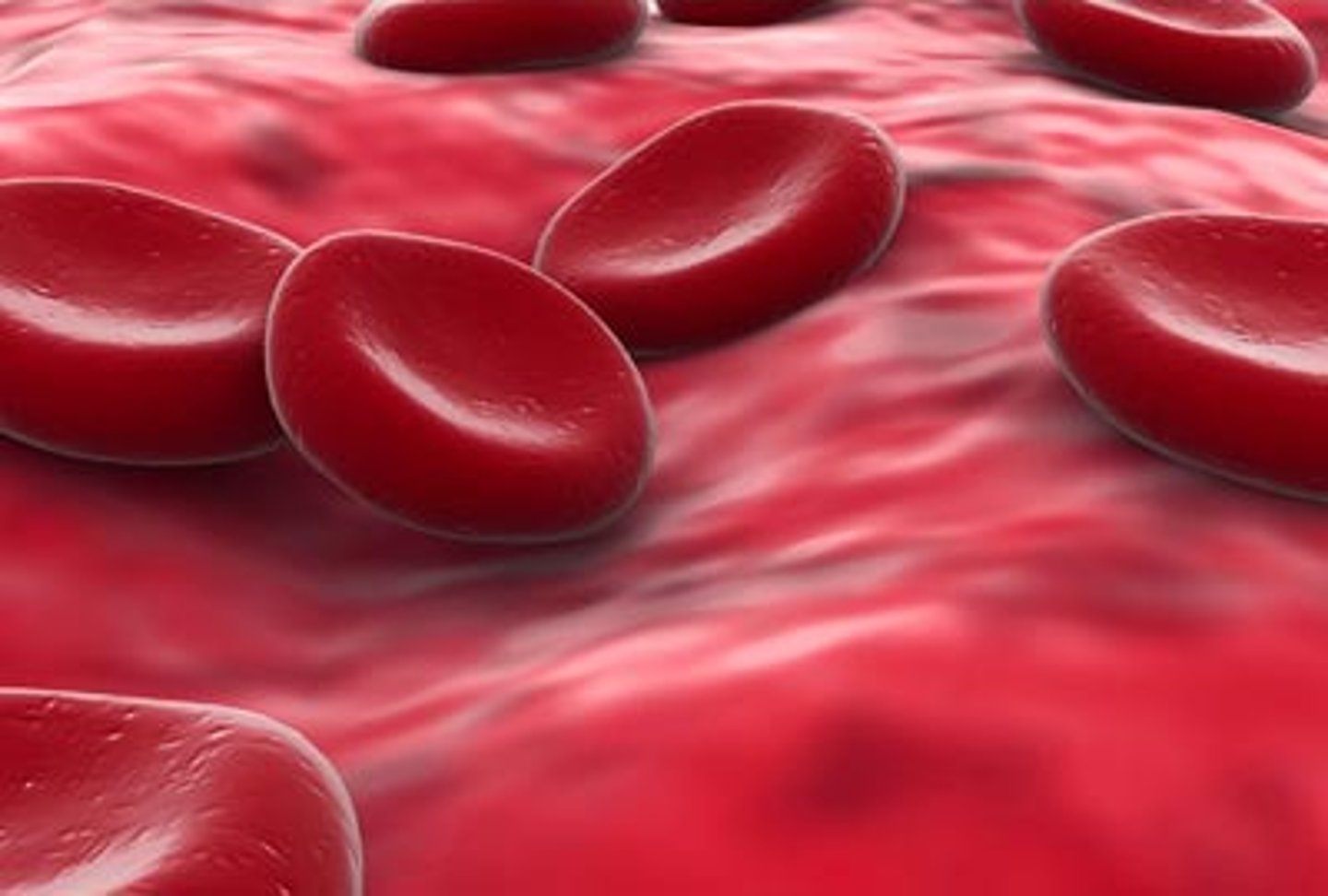
What are white blood cells (leukocytes)?
formed in bone marrow and lymph tissue and defend the body against infection and disease
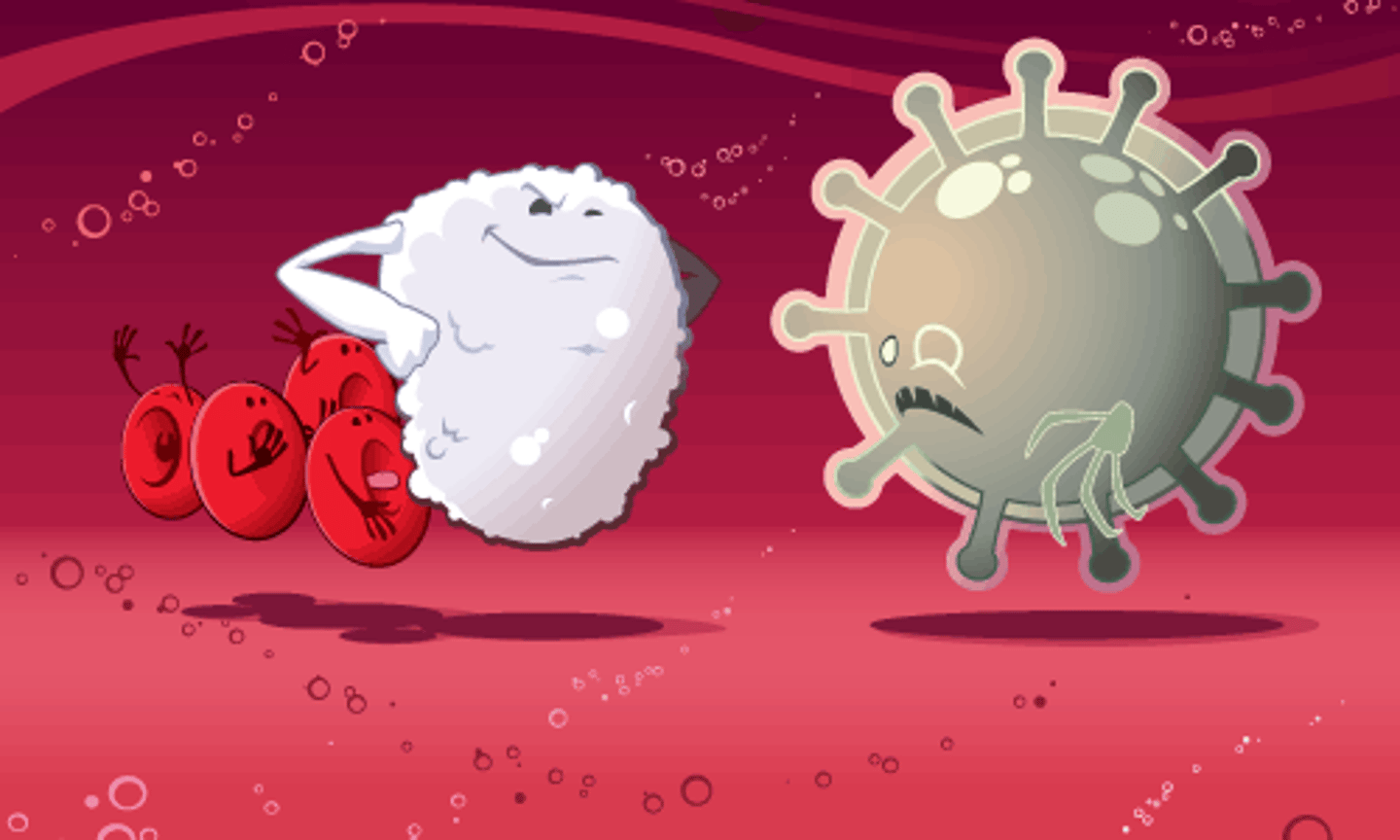
What are platelets?
originating from bone marrow, repairs tears in blood vessel walls and promotes blood clotting
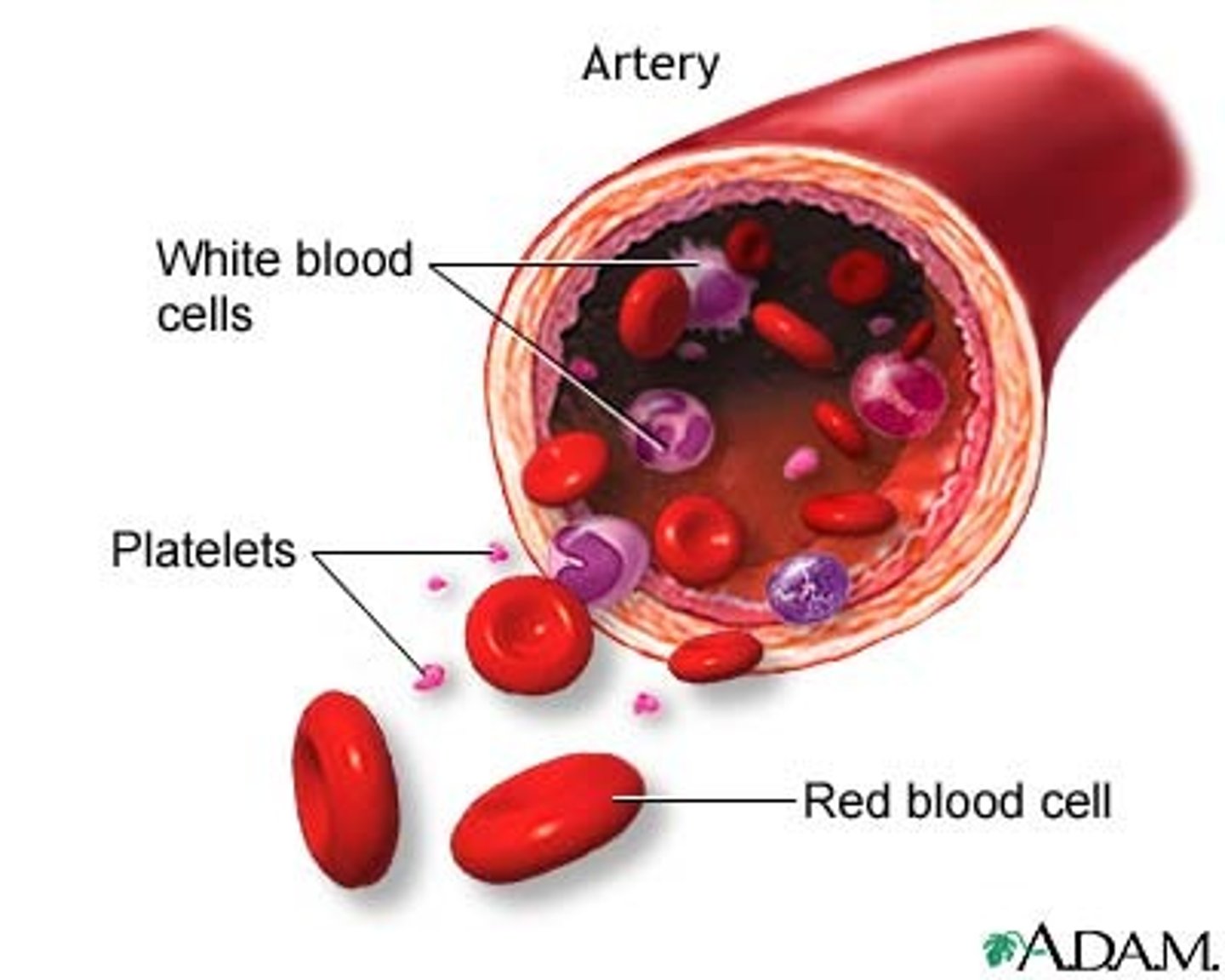
What is plasma?
liquid portion of blood (92% water, 7% plasma protein)
What are veins?
deoxygenated blood returns to the heart
What are arteries broken down into?
arterioles and capillaries
What are arteries?
oxygenated blood from the heart
what are veins broken down into?
venules and venous capillaries
Pulmonary arteries carry _________ blood and the pulmonary veins carry _______ blood
Pulmonary arteries= deoxygenated
Pulmonary veins= oxygenated
path of circulatory system
-- >
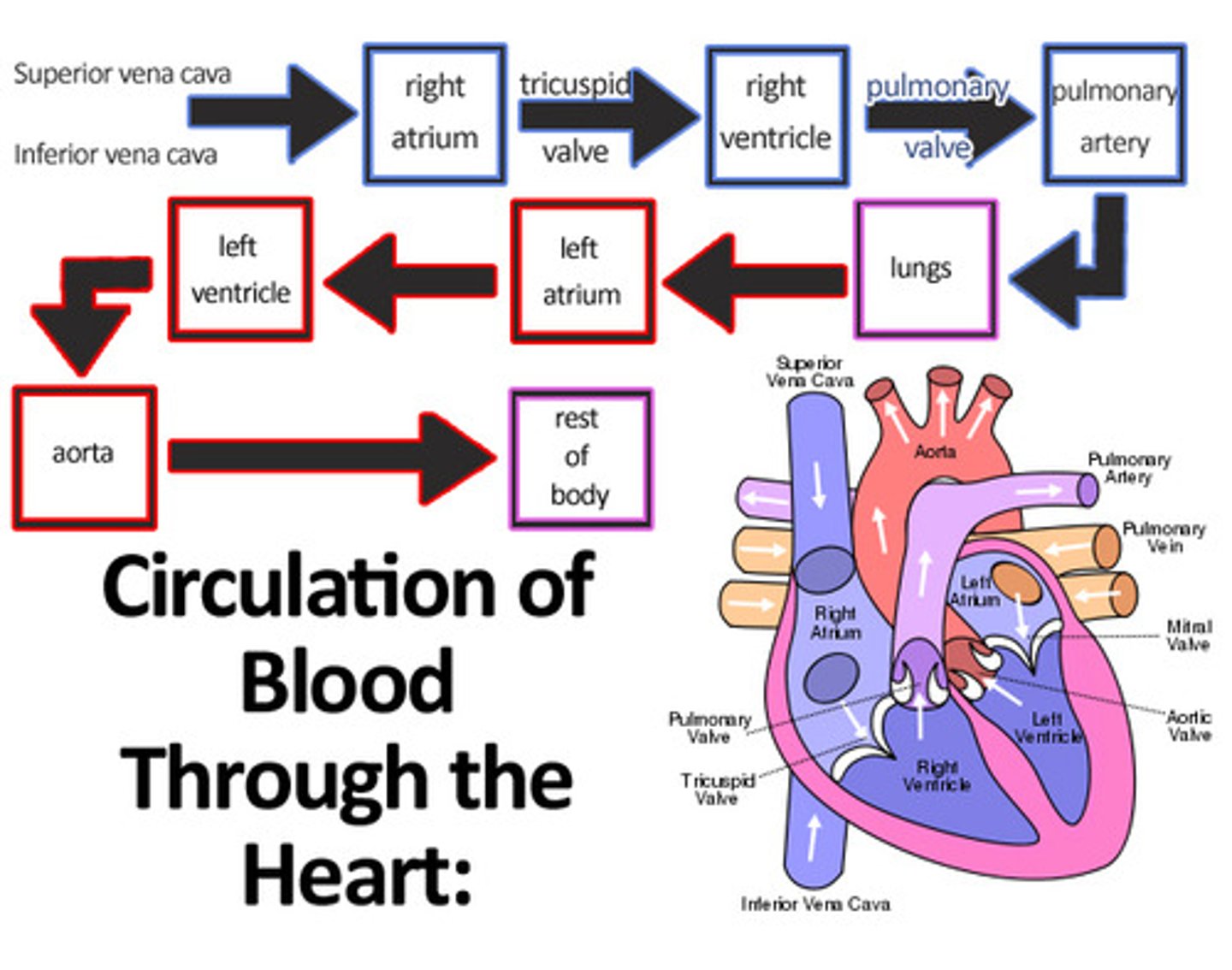
What is the myocardium?
cardiac tissue
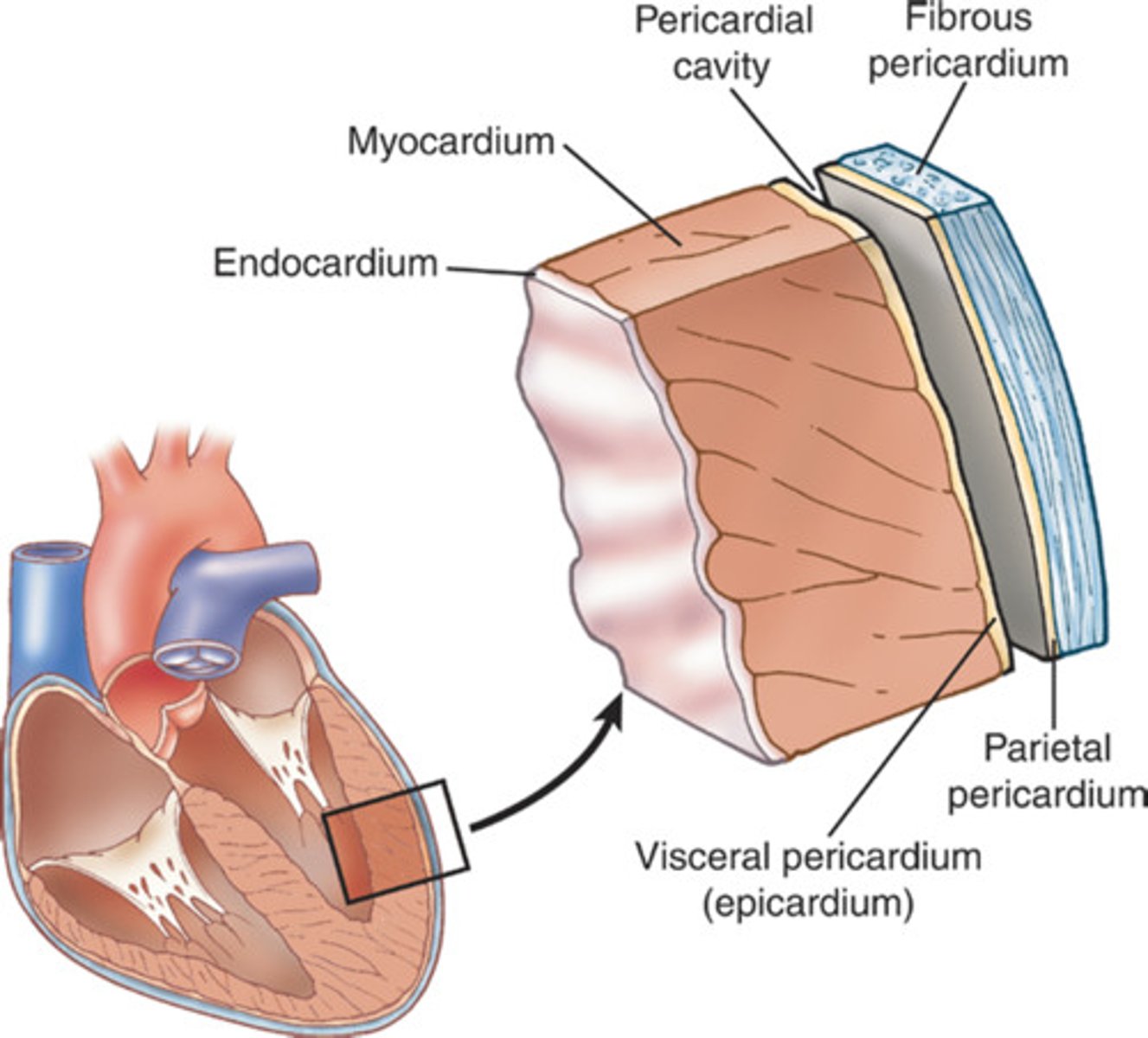
What side of the heart is responsible for circulation and is 3 times as thick?
left
What are the 4 chambers of the heart?
right atrium, right ventricle, left atrium, left ventricle
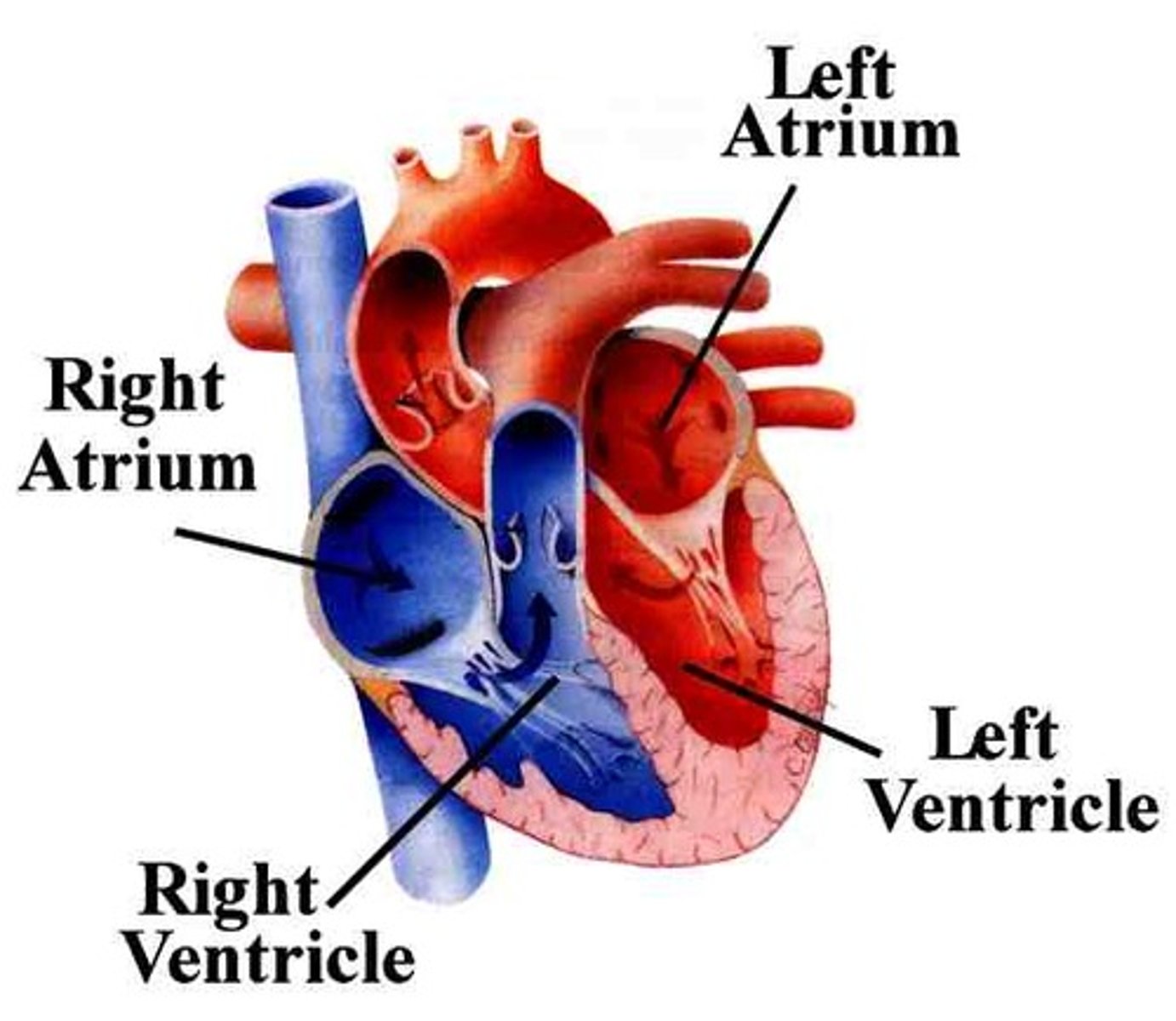
What are the 4 valves of the heart?
tricuspid, pulmonary, mitral, aortic
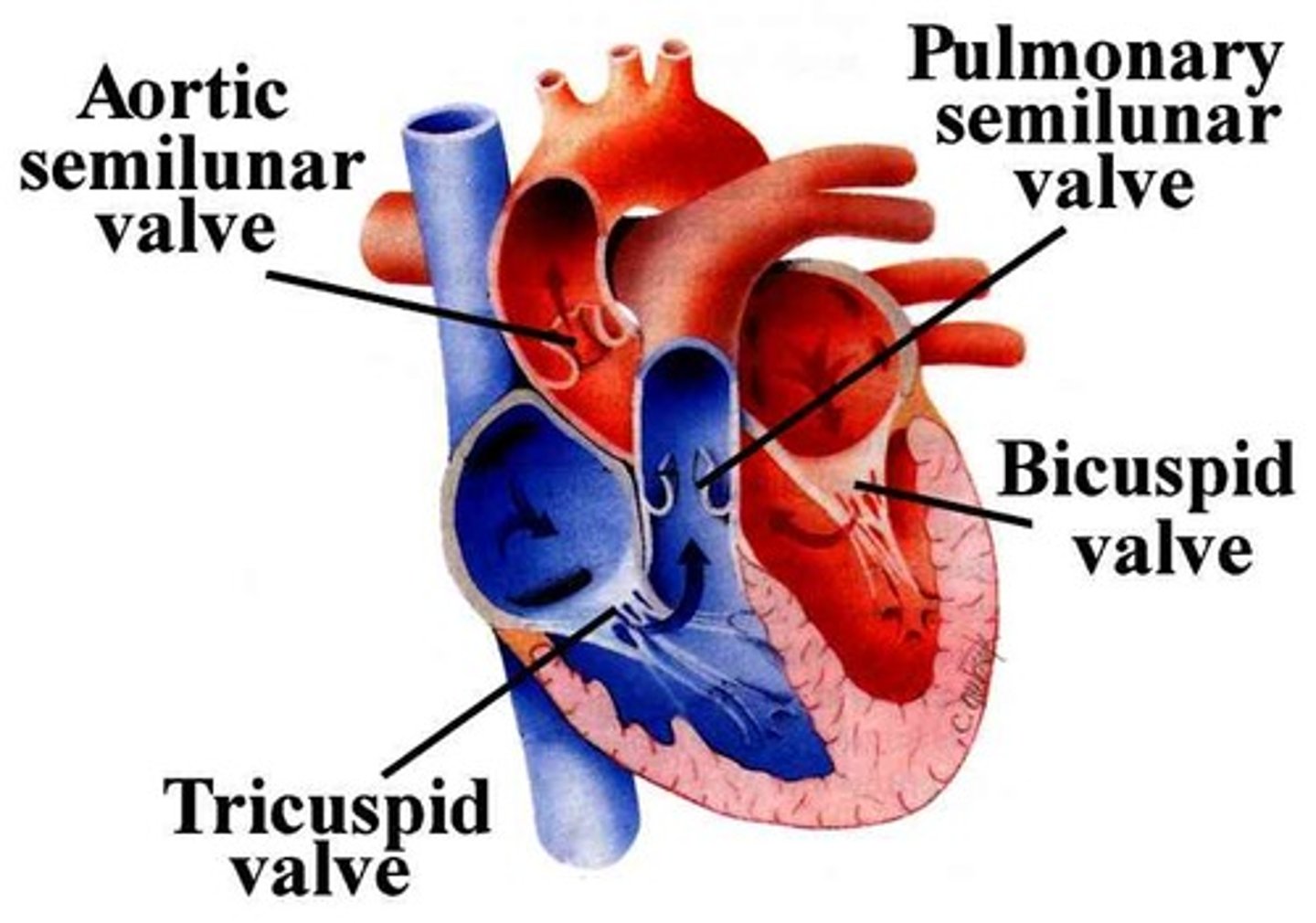
What is the tricuspid valve?
valve between the right atrium and the right ventricle
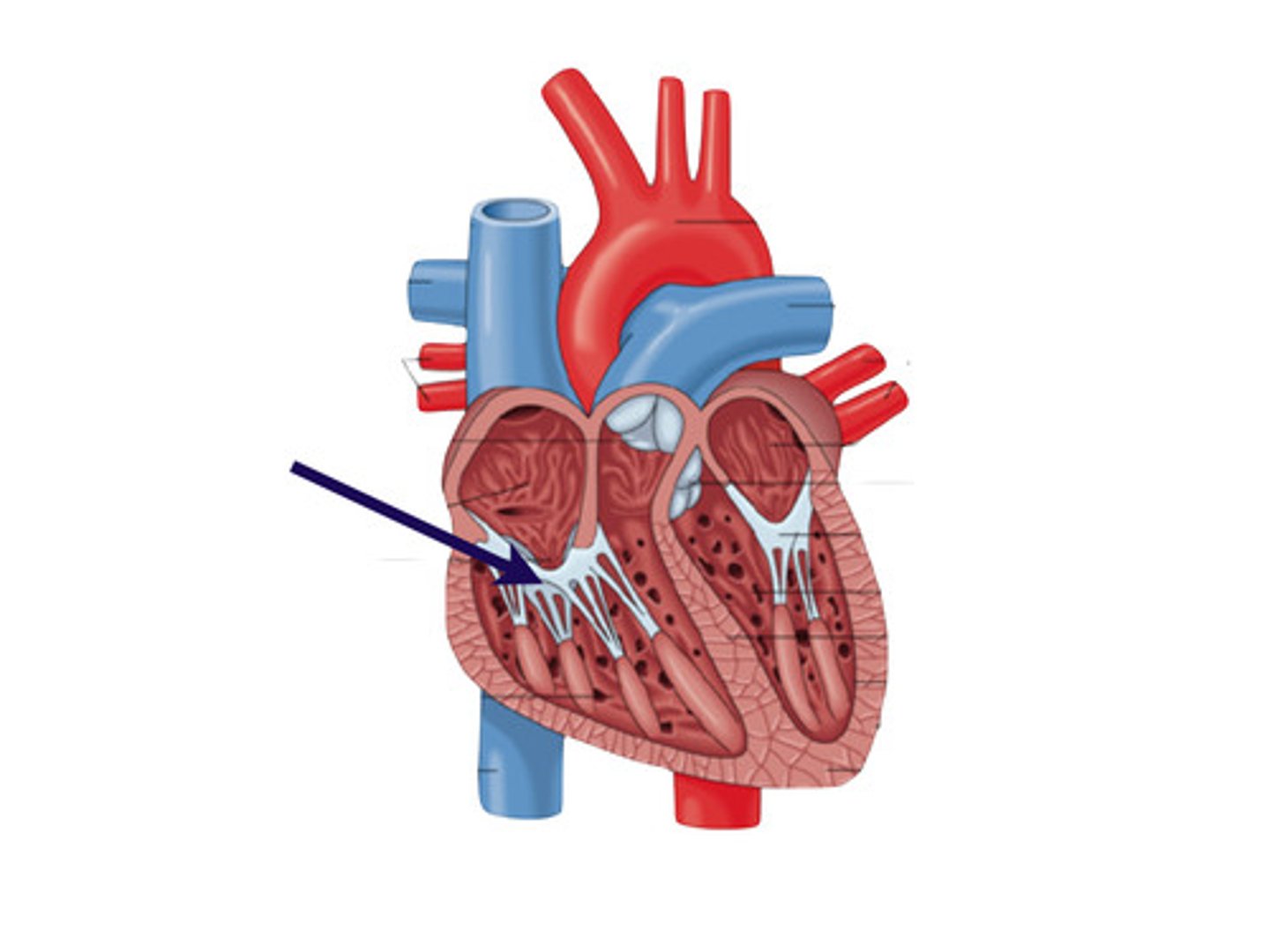
What is the pulmonary valve?
valve between the right ventricle and pulmonary artery
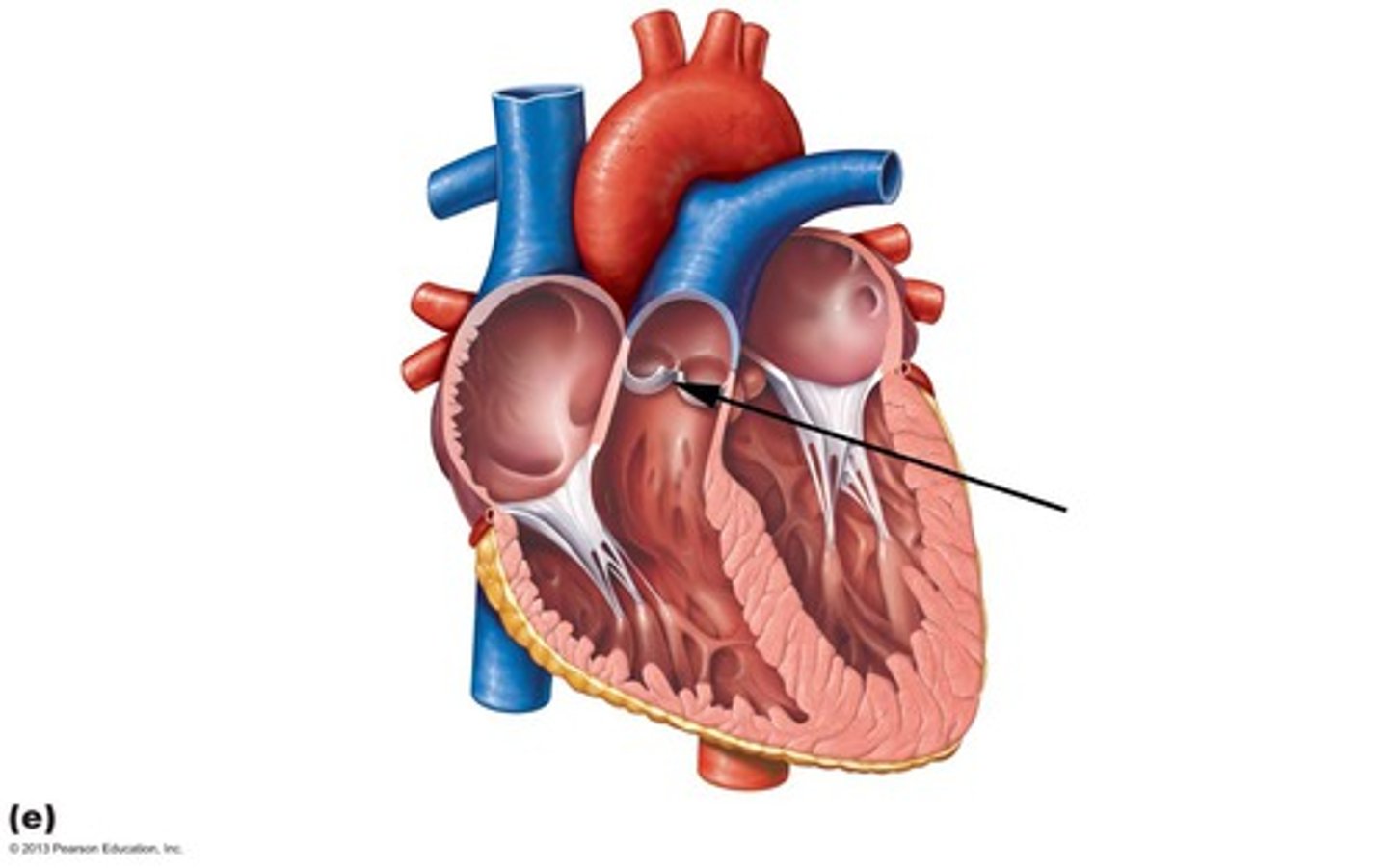
What is the mitral (bicuspid) valve?
valve between the left atrium and the left ventricle
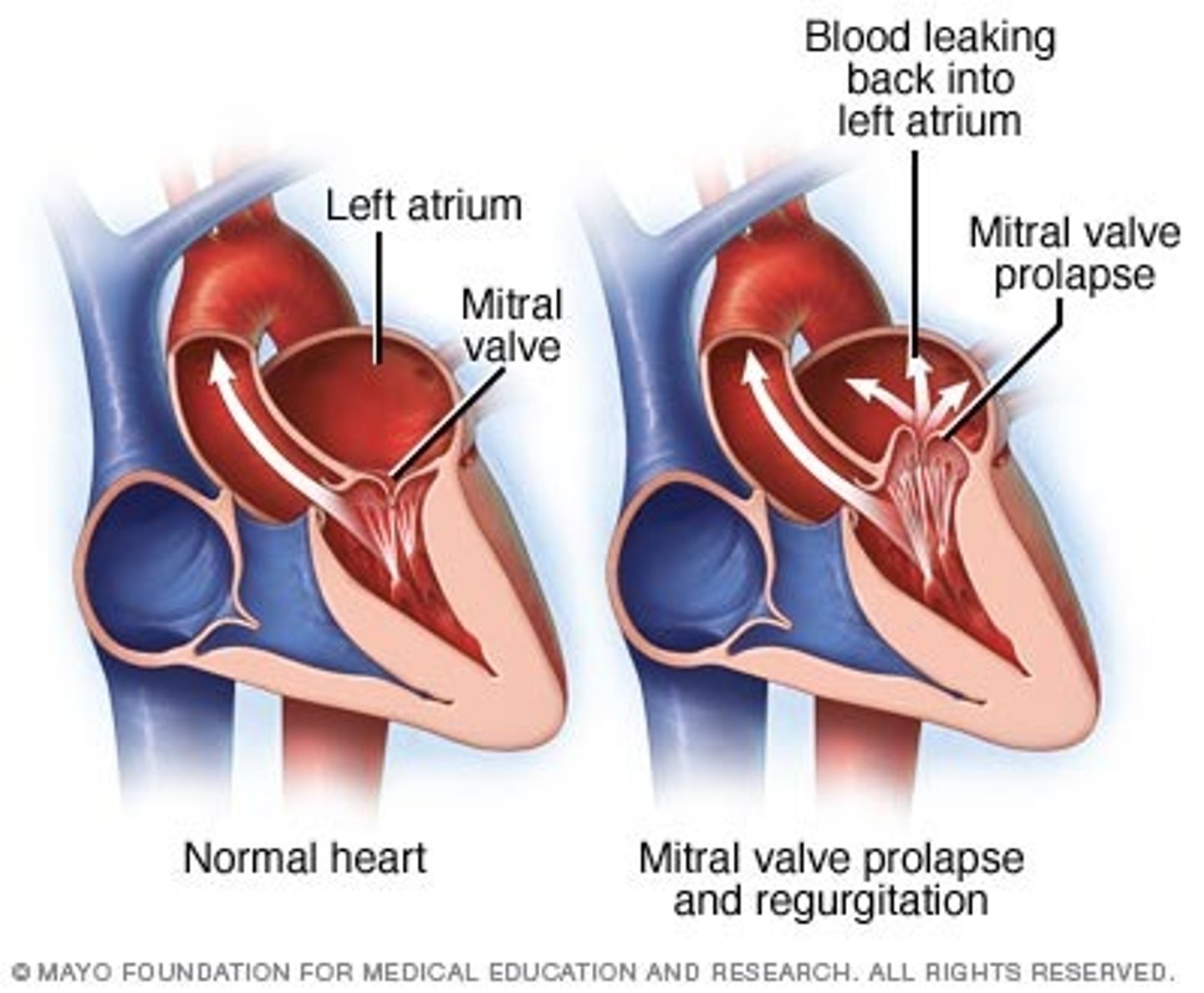
What is the aortic valve?
valve between left ventricle and aorta
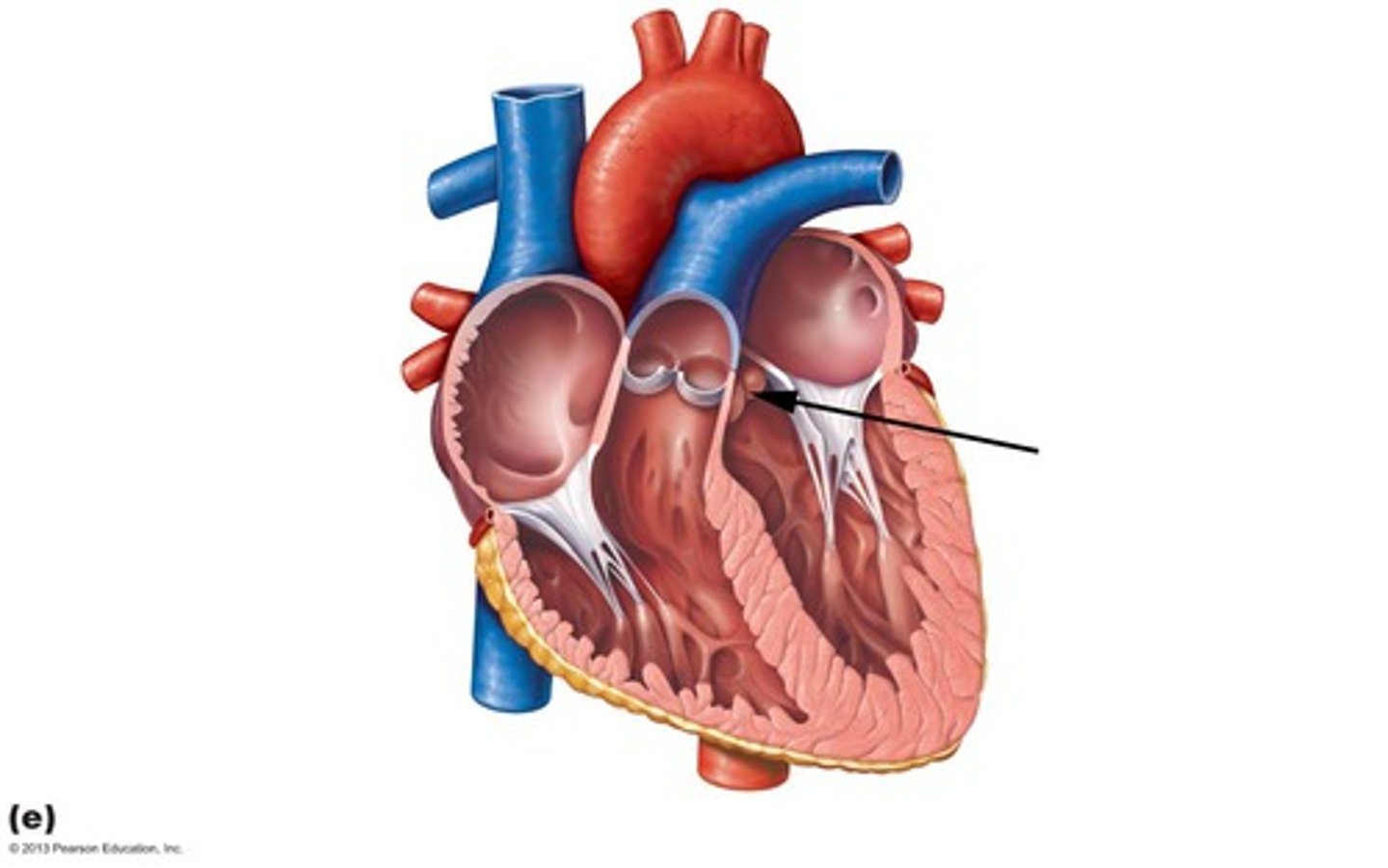
systole and diastole
systole (contraction) and diastole (dilate)
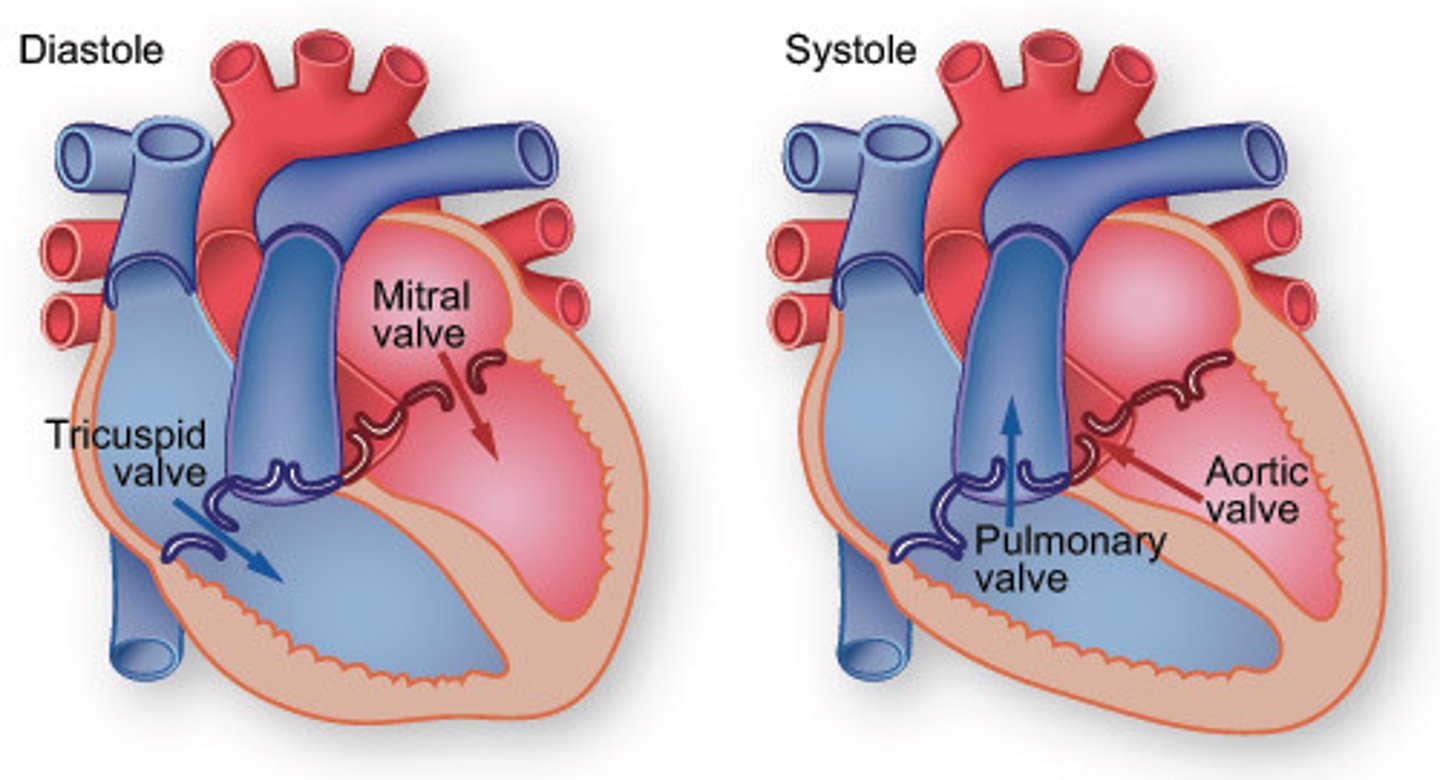
What are coronary arteries?
carry the blood to the heart muscle
Where do the coronary arteries originate?
aorta bulb
What is the coronary sinus system?
returns blood to the rt atrium for recirculation
What are the 3 major branches of the coronary sinus system?
great, middle, small cardiac veins
What are the 2 sections of the aorta?
thoracic and abdominal
What level does the ascending aorta start and end?
starts in left ventricle and ends at L4 then it divides into the rt and lt common iliac arteries
What are the 3 major branches that arise from the aortic arch
1. brachiocephalic artery (rt)
2. lt common carotid
3. lt subclavian
What is the brachiocephalic artery?
A major artery that branches from the arch of the aorta.
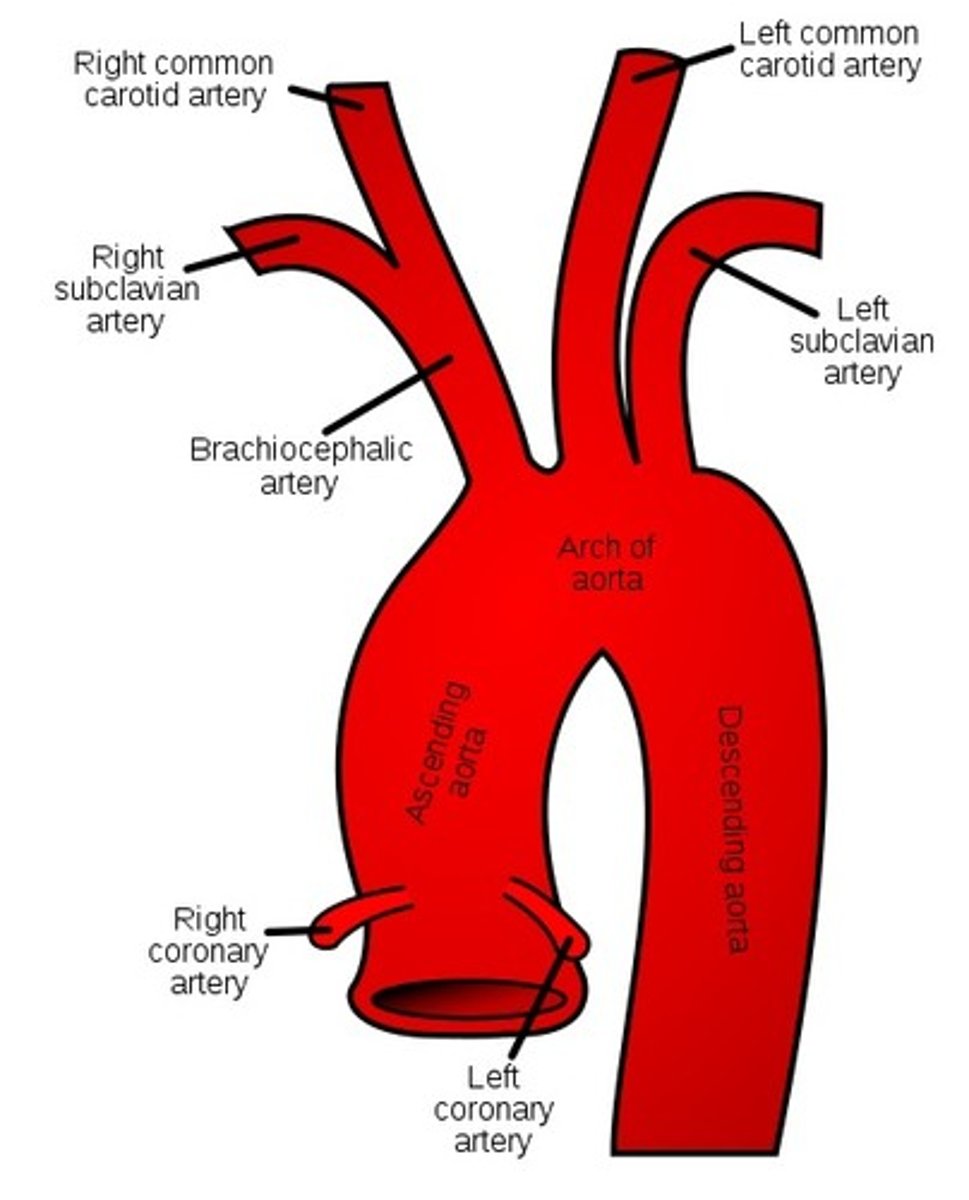
What do the lt and rt common carotids do?
supply ANTERIOR circulation to the brain
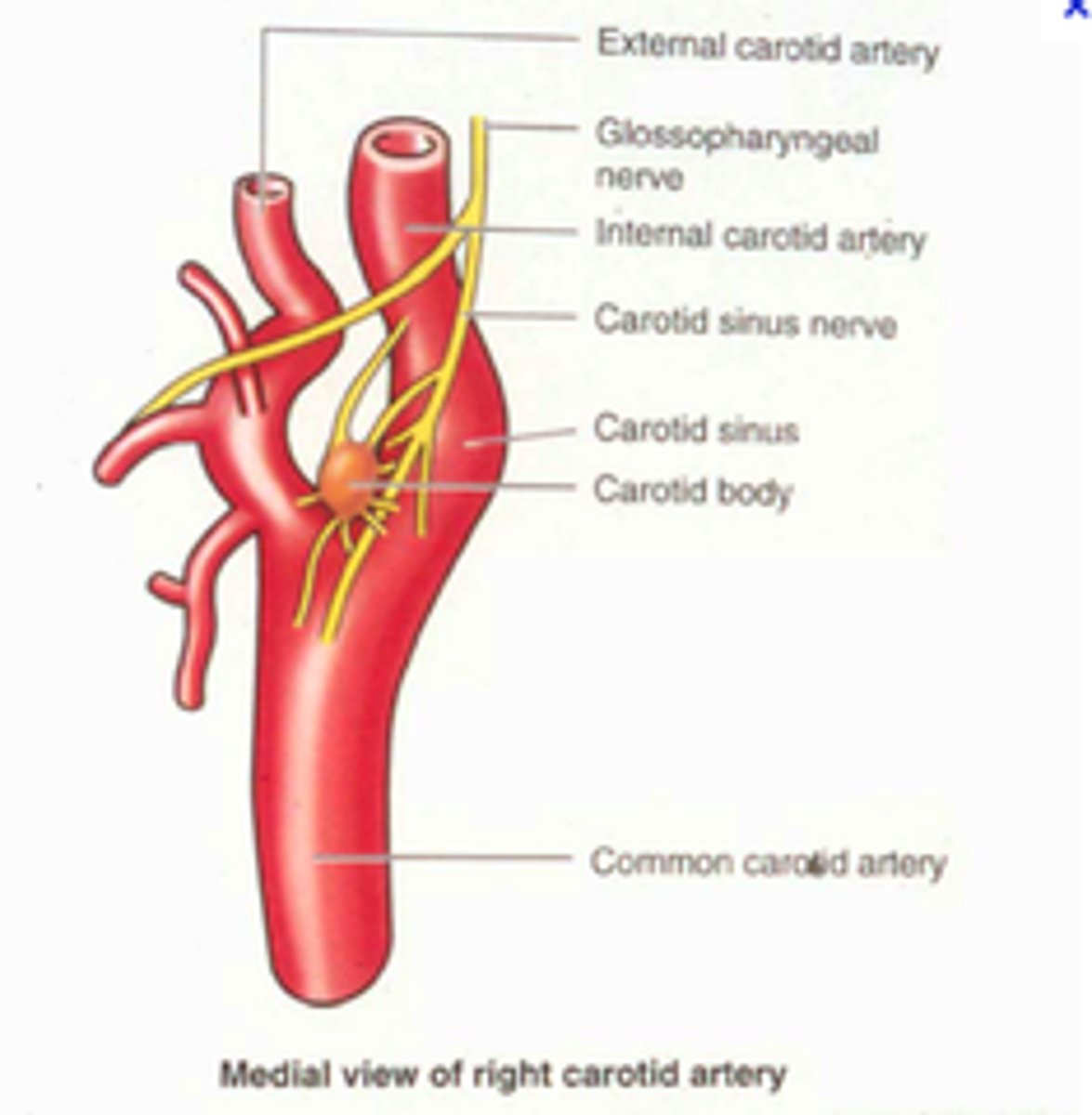
What are the rt internal and external carotid arteries
common divides @ the upper level of the thyroid cartilage or C4
What do the lt and rt vertebral arteries do?
supply POSTERIOR circulation to the brain
What are the anterior and middle cerebral artery
branch of each internal carotid
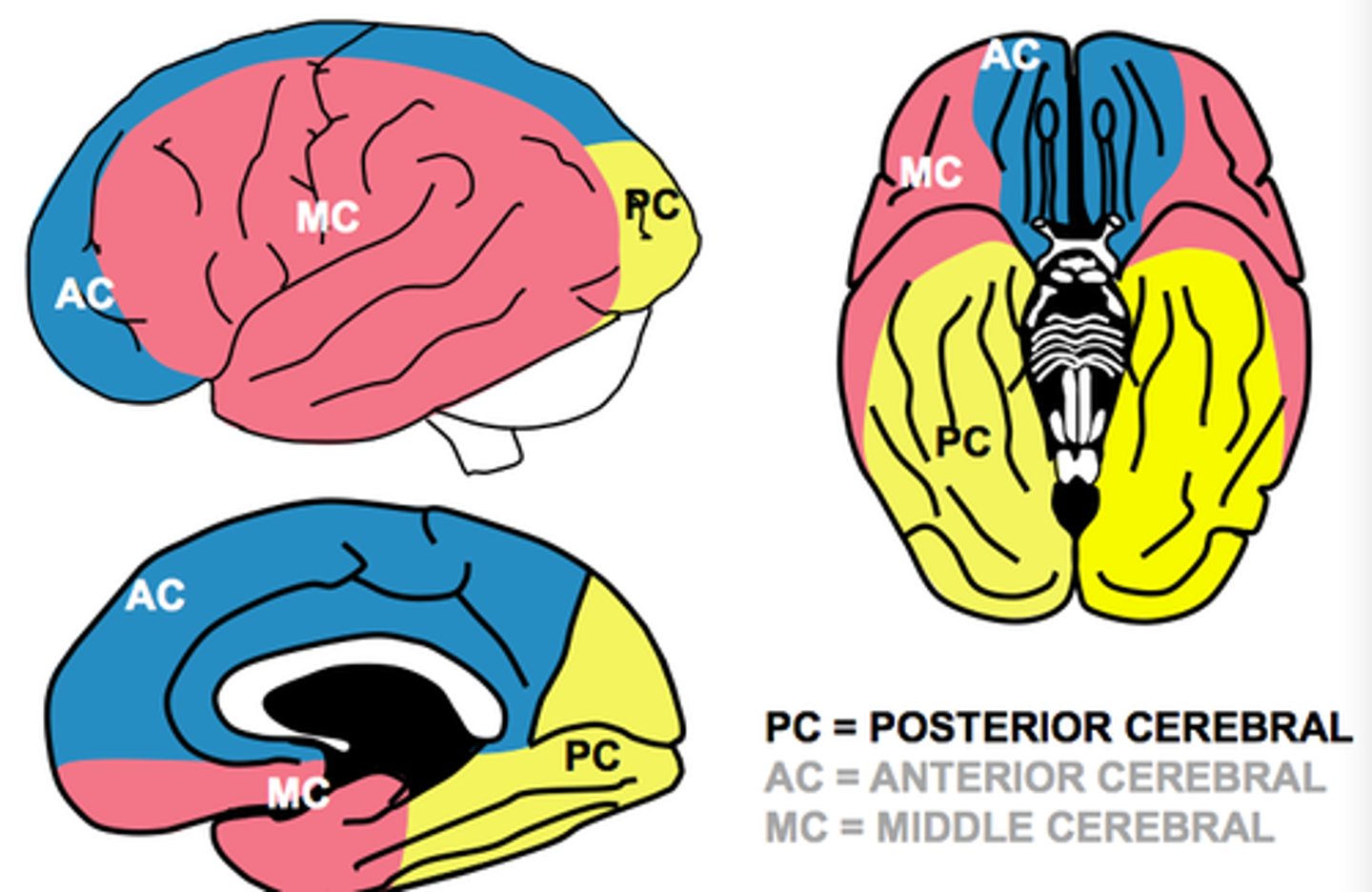
5 arteries of the Circle of Willis
1. ant communicating
2. ant cerebrals
3. branches of the internal carotids
4. post communicating
5. post cerebrals
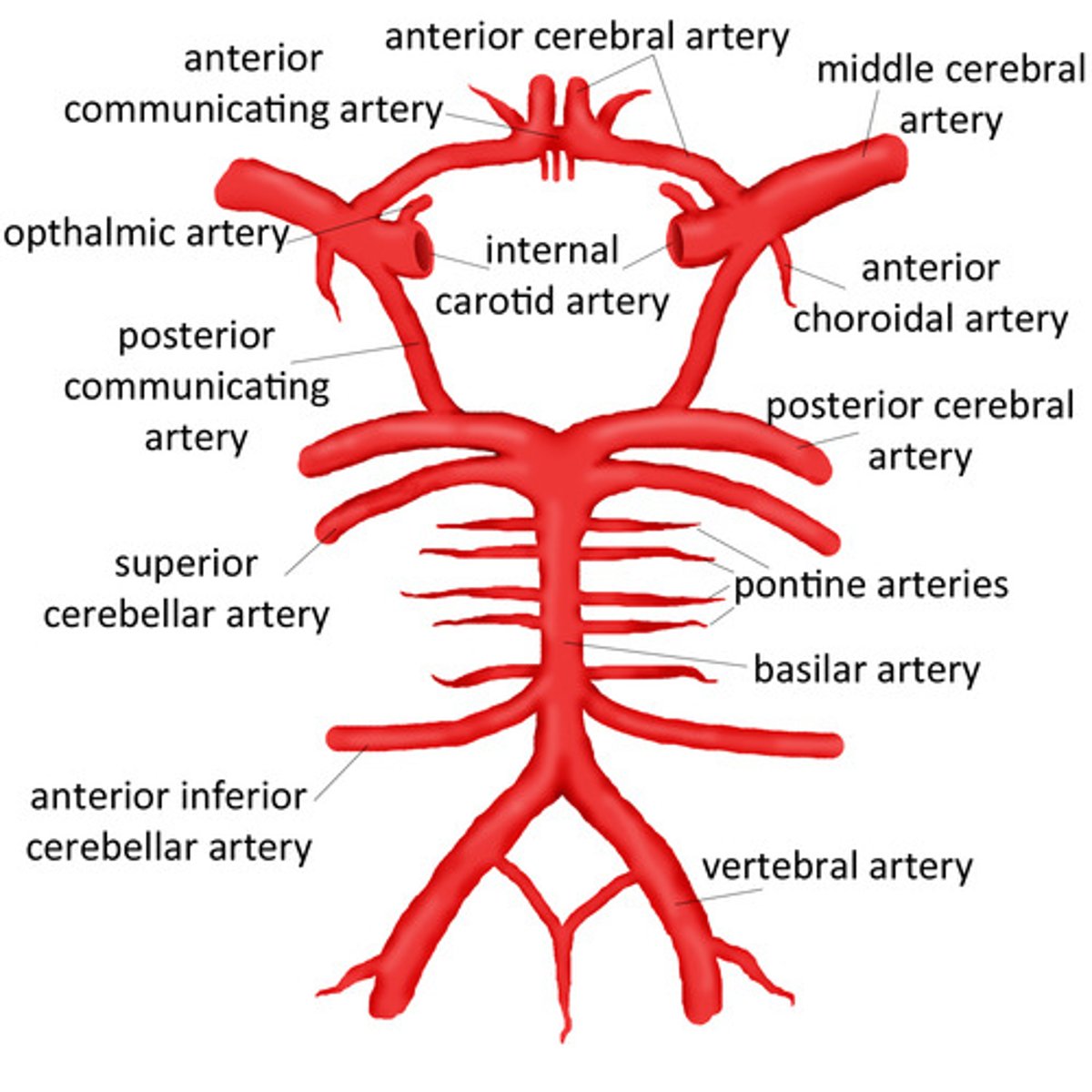
3 pair of major veins of the neck
1. rt and lt internal jugular veins
2. rt and lt external jugular veins
3.rt and lt vertebral veins
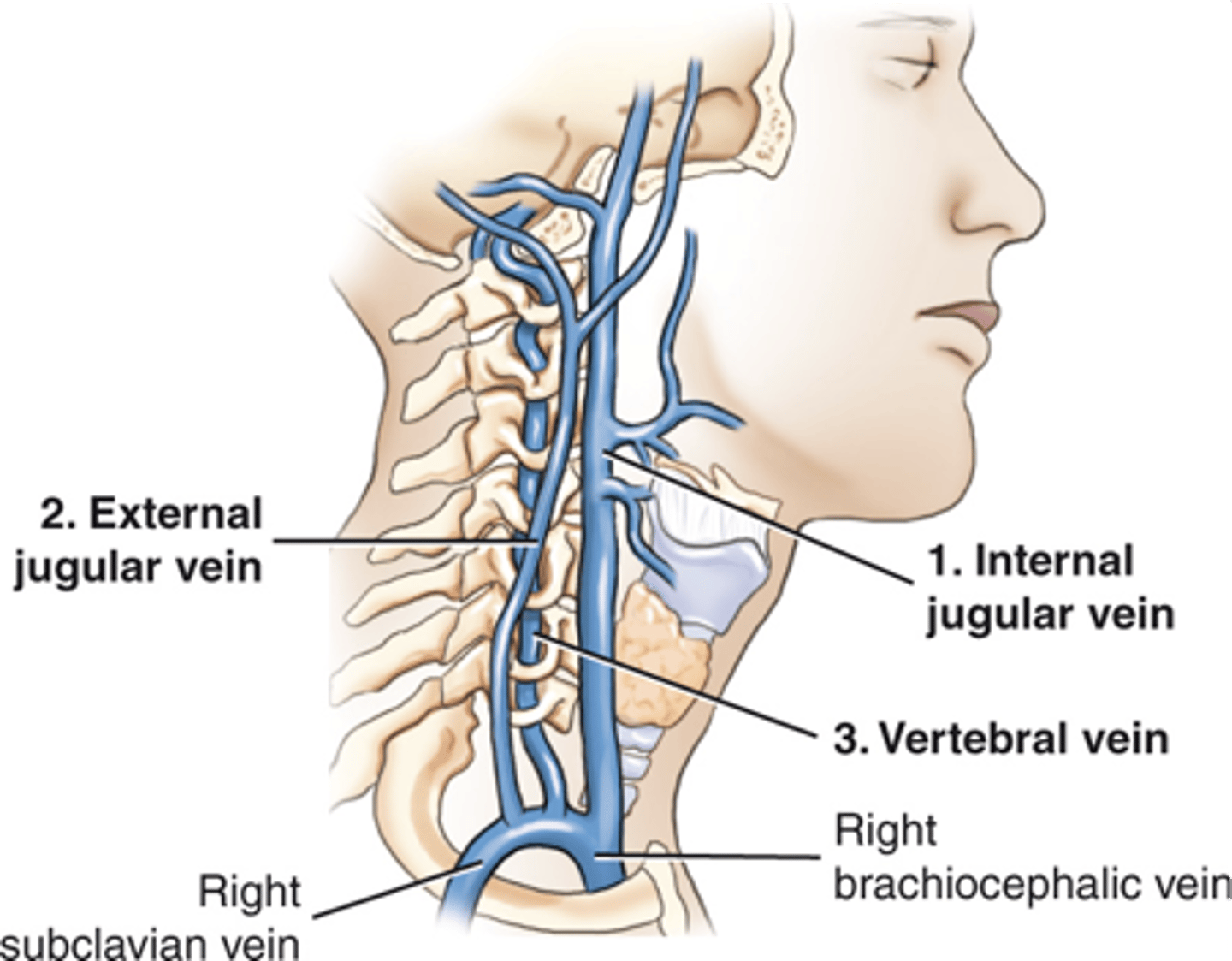
What do the dura mater sinuses do?
venous channels that drain blood from the brain
What dura mater sinus continues as the internal jugular?
sigmoid sinus
What are the 2 major arteries located within the chest
aorta and pulmonary
What are the 4 segments of the thoracic aorta?
Aortic bulb
Ascending aorta
Aortic arch
Descending aorta
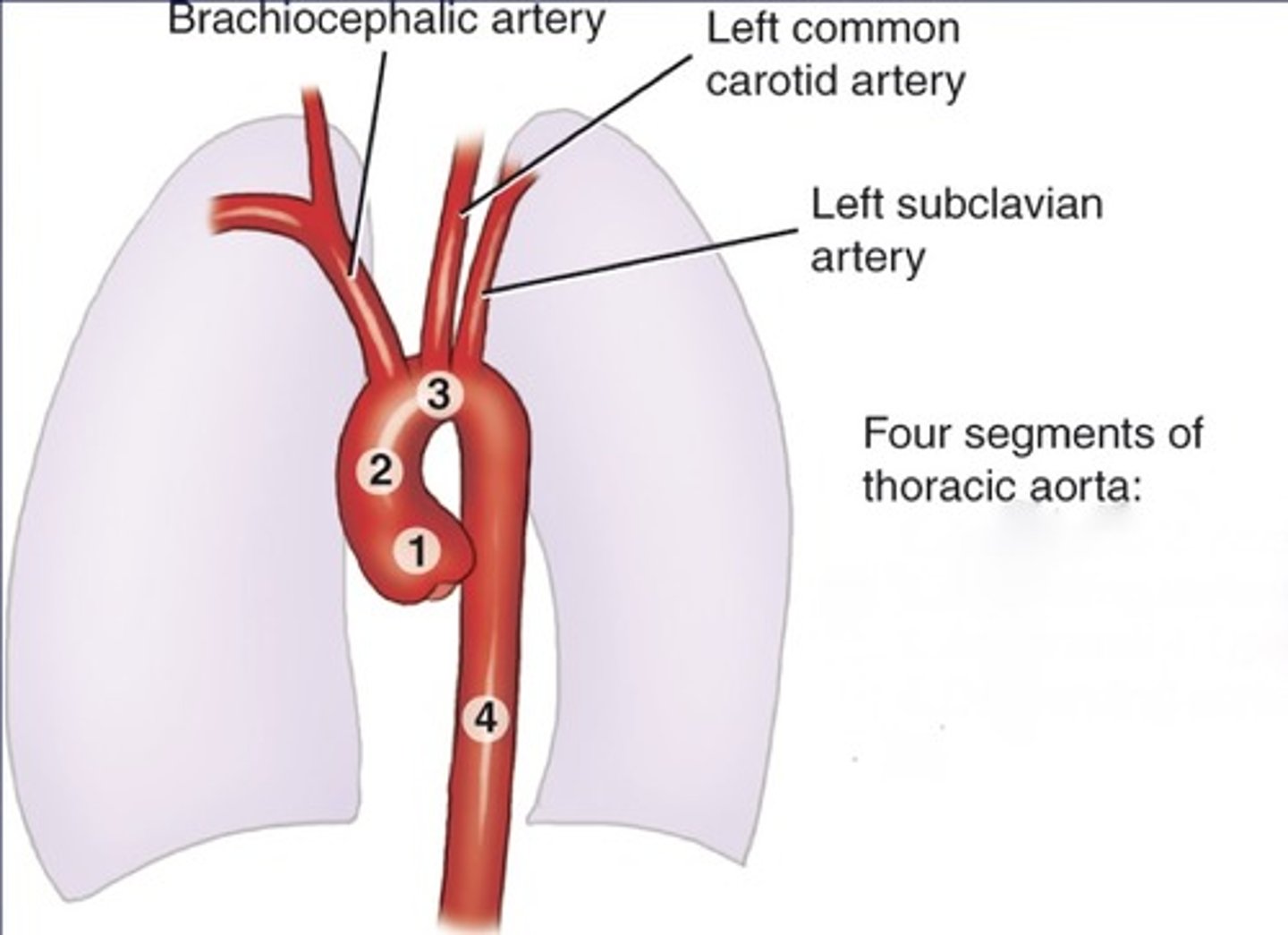
What are the 3 variations of the aorta arch?
1. lt circumflex- normal
2. inverse- arch goes to the rt
3. pseudocoarctation- arched descending aorta
List the 3 major veins located in the chest
1. superior vena cava
2. azygos
3. pulmonary veins
What is the azygos vein?
major tributary returning blood from the chest to the vena cava
What are the 3 large branches of the celiac axis artery
hepatic, gastric, splenic
5 branches of abdominal aorta
1. celiac axis artery
2. sup. mesenteric
3. lt renal
4. rt renal
5. inf. mesenteric
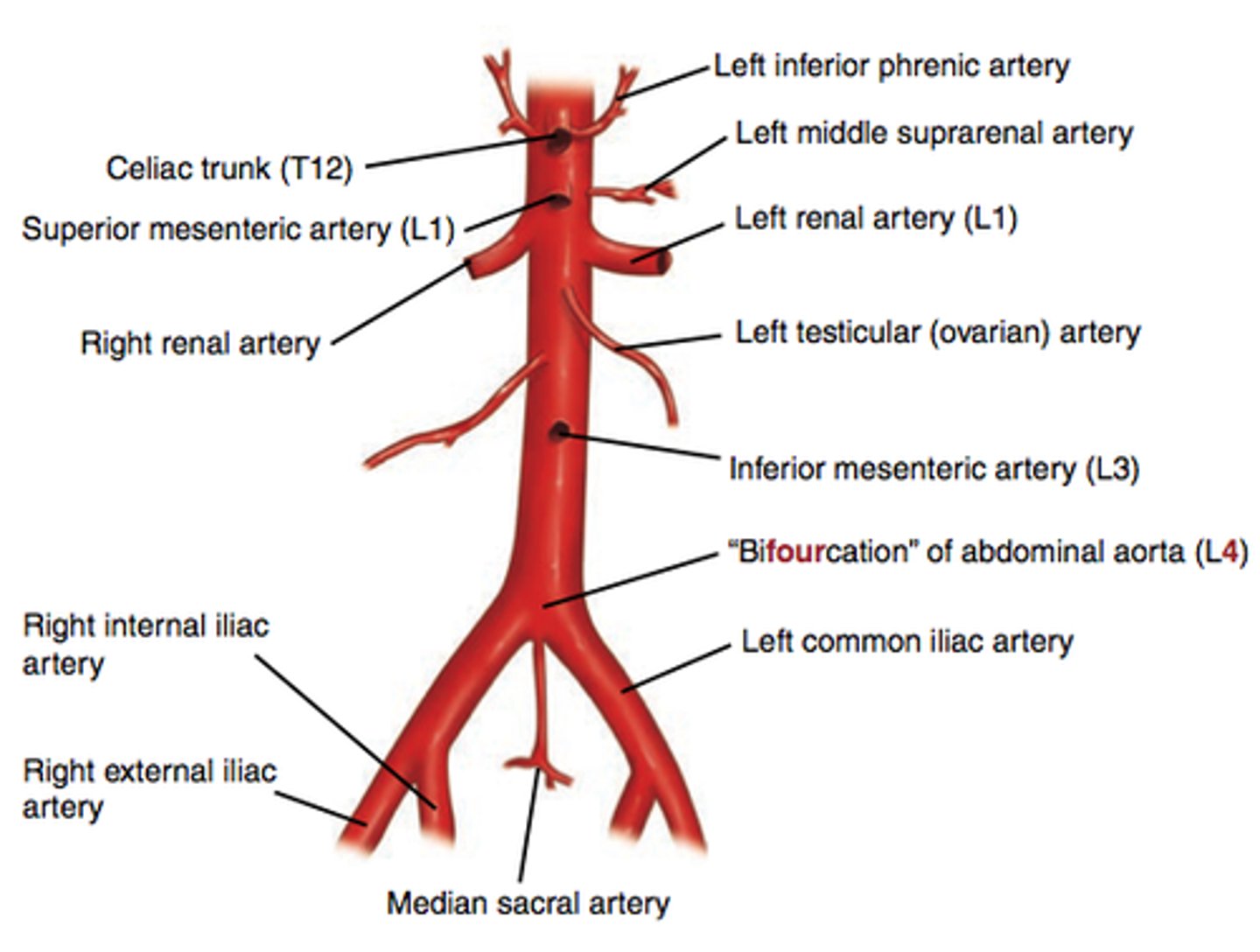
internal iliac arteries supply blood to the _______ organs. Externals supply blood to the ______ ______
internal- pelvic organs
external- lower limbs
What does the portal system include?
all veins that drain blood from the abdominal digestive track, the spleen, pancreas, and gall bladder
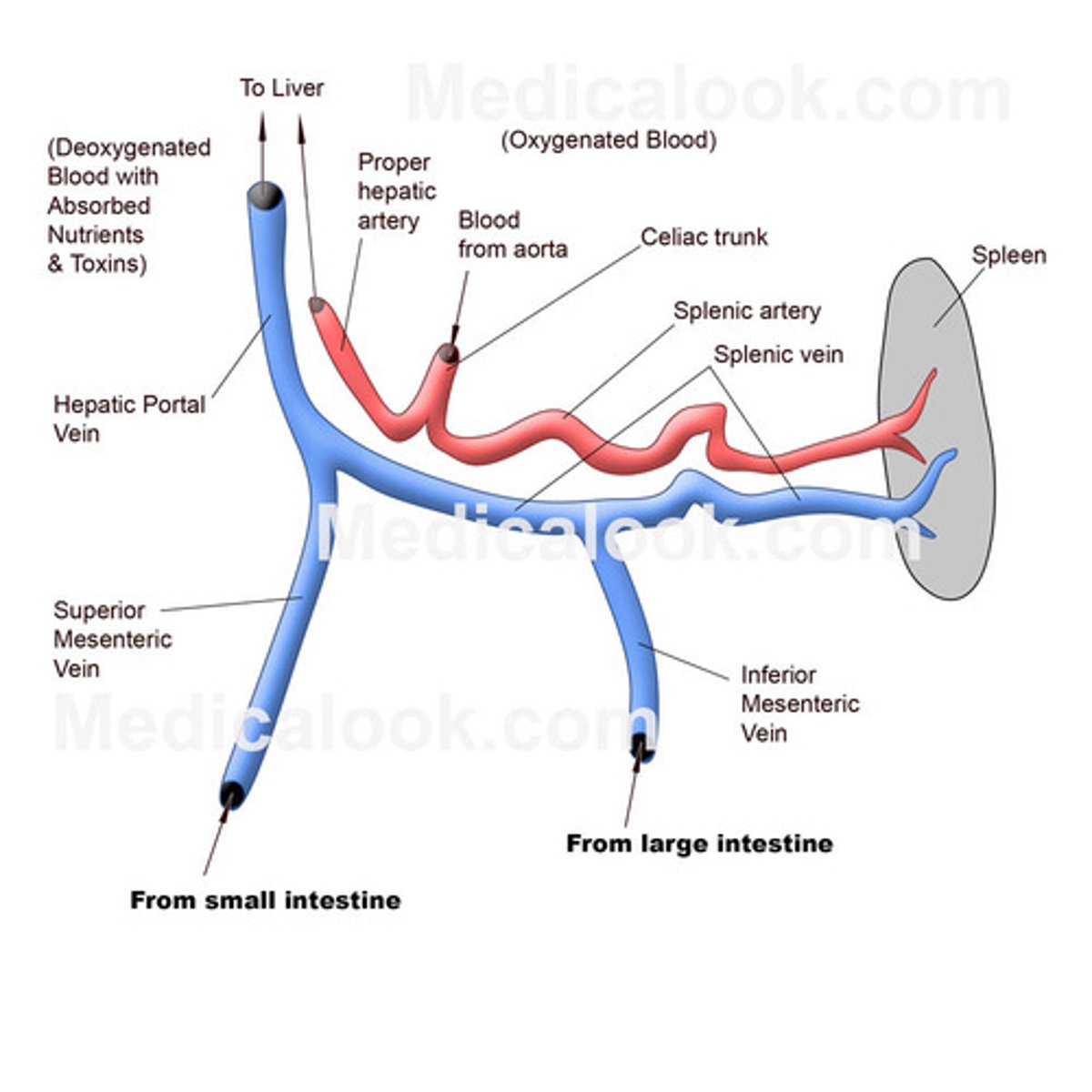
What 2 things unite to form the portal vein?
splenic vein and the SMV
The subclavian continues to become: (in order)
axillary > brachial > ulnar > radial > 2 palmer arches
the venous system of the upper limb is divided into 2 sets which are?
deep and superficial
deep sets of the upper limbs consist of:
2 brachial, radial, ulnar, palmer arches
superficial sets of the upper limbs consist of:
cephalic, basilic, median cubital
Label the lower limb arteries (in order)
-- >
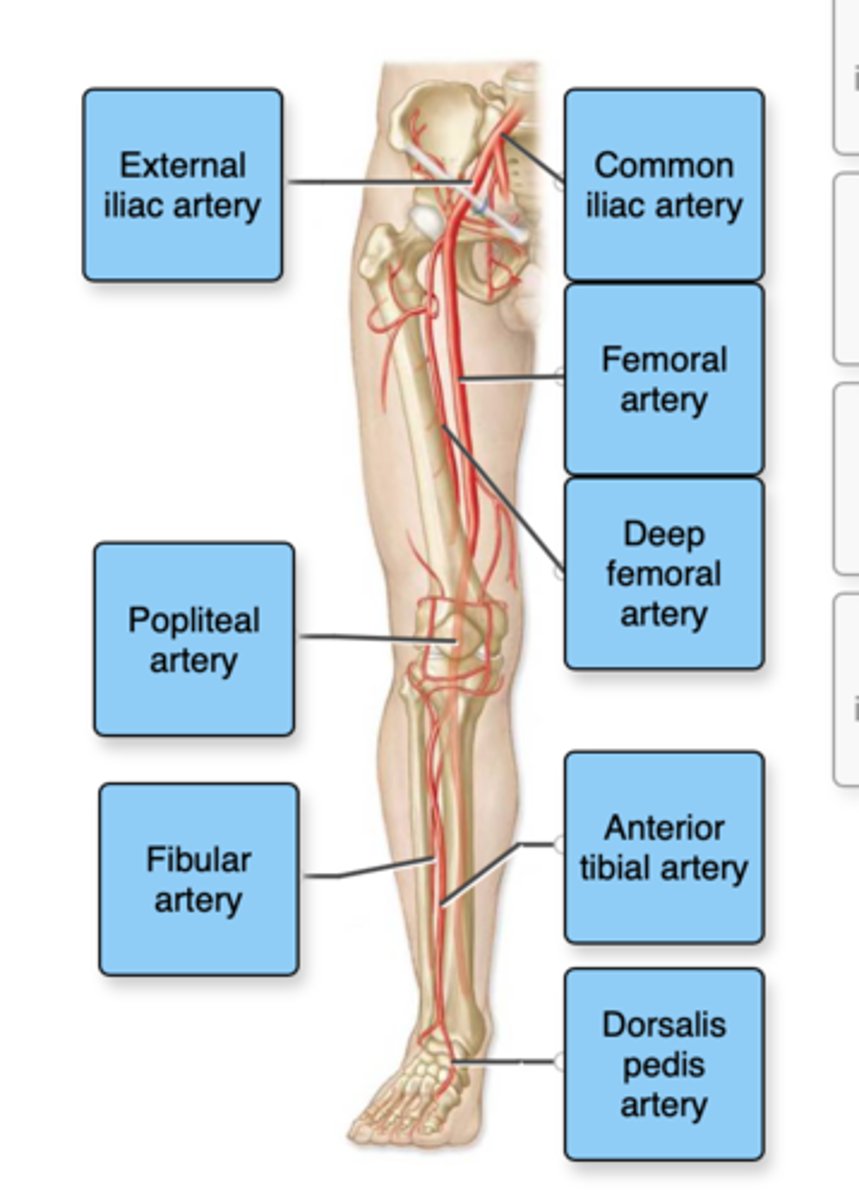
deep veins of the lower limbs consist of
posterior tibial, peroneal, anterior tibial, popiteal, femoral
superficial veins of the lower limbs consist of:
great saphenous, small saphenous, veins of the foot
What is the longest vein in the body?
great saphenous vein
What are lymphatic systems functions
1. fight disease
2. returns proteins to the blood
3. filters the lymph in the lymph nodes
4. transfers fat to the blood
What does the lymphatic system serve to do?
drain interstital fluid and return it to the venous system
How does the lymphatic fluid move?
only 1 direction; AWAY from the tissues
What is the thoracic duct?
Largest lymph vessel in the body that drains the lt side of the body, lower limbs, pelvis, and abdomen into the lt subclavian vein
What is the rt lymph duct?
drains the upper rt side of the body, upper limb, head and neck region into the junction of rt jugular and subclavian